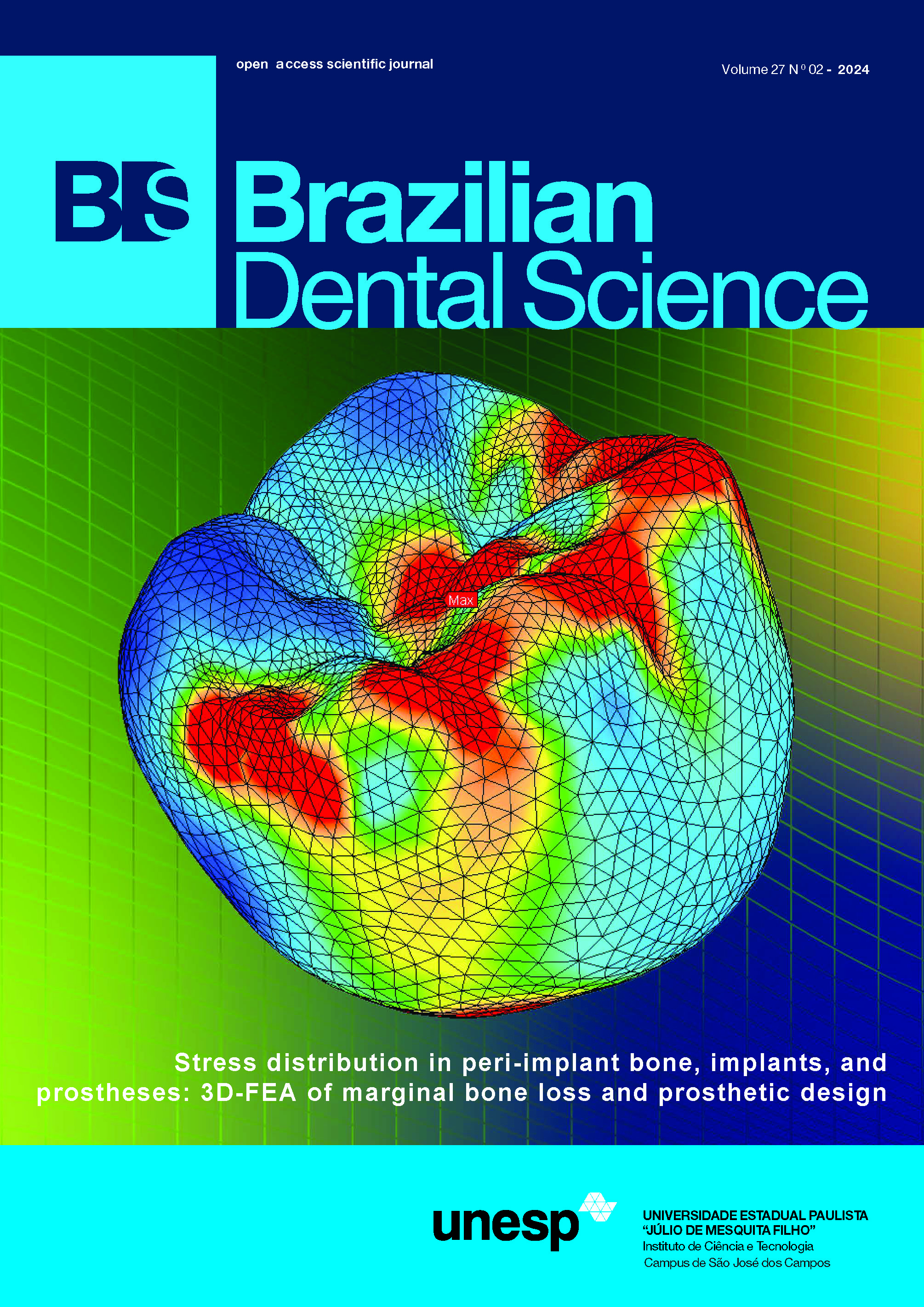Effect of saliva contamination and different decontamination protocols on microshear bond strength of a universal adhesive to dentin
DOI:
https://doi.org/10.4322/bds.2024.e4159Abstract
Objective: To evaluate the effect of saliva contamination and different decontamination protocols on the microshear bond strength of a universal adhesive to dentin. Material and Methods: 84 bovine teeth were divided into three groups according to bonding stage at which salivary contamination occurred; before curing of the adhesive, after curing of the adhesive, and a control group with no salivary contamination. Each group was further subdivided into four subgroups according to the decontamination protocol used (n=7): no decontamination protocol, rinsing then reapplication of the adhesive, grinding with sandpaper silicon carbide grit 600 then reapplication of the adhesive and finally ethanol application then reapplication of the adhesive. Specimens were tested in micro-shear mode. Results: All the decontamination protocols used in this study to reverse effect of salivary contamination before curing significantly improved the bond strength to contaminated dentin (p<0.001). Meanwhile, after curing, ethanol decontamination protocol recorded highest bond strength followed by rinsing and grinding compared to no decontamination (p<0.001). Conclusion: Saliva contamination led to significant deterioration in the bond strength regardless of the bonding stage at which saliva contamination occurred. All decontamination protocols improved the immediate microshear bond strength when contamination occurred before curing of the adhesive, while ethanol seemed to be the most effective both before curing and after curing.
KEYWORDS
Bond strength; Decontamination; Ethanol; Saliva; Universal adhesives.
Downloads
Published
How to Cite
Issue
Section
License
Brazilian Dental Science uses the Creative Commons (CC-BY 4.0) license, thus preserving the integrity of articles in an open access environment. The journal allows the author to retain publishing rights without restrictions.
=================




























